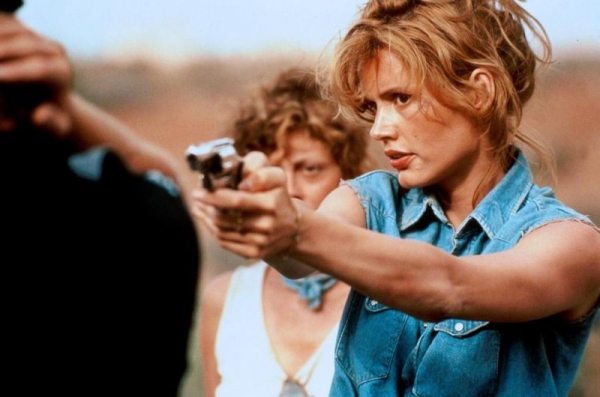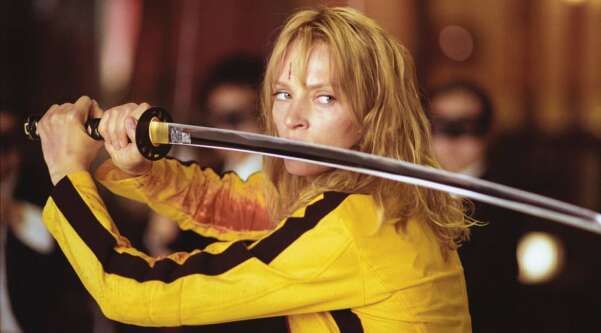
★★★★½
“Here Comes ‘The Bride’…”
 I don’t like Quentin Tarantino. In fact, every time I see his smug little face, I have to resist the urge to hit something. I do admire his talents as a scriptwriter, but think he needs someone else to rein in the pop-culture references and other self-indulgent excesses which pepper his work. That’s why I prefer From Dusk Till Dawn, Natural Born Killers and True Romance, and find Reservoir Dogs, and especially Pulp Fiction, very over-rated. I have no interest in hearing about the meaning of Madonna songs, or knowing what they call quarter-pounders in France. And don’t even get me started on his lack of ability as an actor…
I don’t like Quentin Tarantino. In fact, every time I see his smug little face, I have to resist the urge to hit something. I do admire his talents as a scriptwriter, but think he needs someone else to rein in the pop-culture references and other self-indulgent excesses which pepper his work. That’s why I prefer From Dusk Till Dawn, Natural Born Killers and True Romance, and find Reservoir Dogs, and especially Pulp Fiction, very over-rated. I have no interest in hearing about the meaning of Madonna songs, or knowing what they call quarter-pounders in France. And don’t even get me started on his lack of ability as an actor…
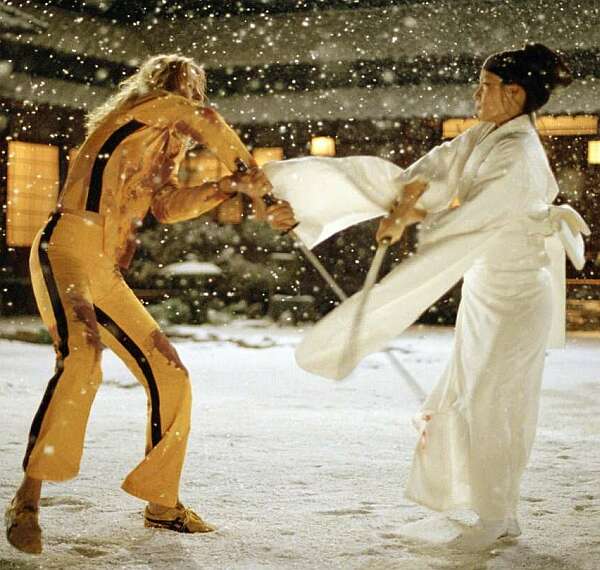 There is also the nasty question of how much of what is praiseworthy, is actually Quentin’s own work. If you’ve seen the infamous Who Do You Think You’re Fooling?, which intercuts clips from Reservoir Dogs with very similar scenes from a Hong Kong movie made several years previously, City on Fire, you’ll know what I mean. I’d rather praise film-makers such as David Cronenberg, who do more than cobble together pieces “borrowed” from other people, no matter how amusingly post-modern the results may be.
There is also the nasty question of how much of what is praiseworthy, is actually Quentin’s own work. If you’ve seen the infamous Who Do You Think You’re Fooling?, which intercuts clips from Reservoir Dogs with very similar scenes from a Hong Kong movie made several years previously, City on Fire, you’ll know what I mean. I’d rather praise film-makers such as David Cronenberg, who do more than cobble together pieces “borrowed” from other people, no matter how amusingly post-modern the results may be.
I say this, so you know I am no drooling fanboy, and am probably inclined to be more critical than most. But I have to say, the first part of Kill Bill is almost entirely satisfactory, recovering after a shaky start. When it opened with a quote from Star Trek (of questionable relevance), I feared this was a Kevin Smith movie, rather than the brutal action pic I wanted. But such tendencies were largely kept under control, perhaps because there wasn’t much dialogue in which to work smug references.
Instead, it’s the soundtrack which slides into self-indulgence. You can tell Tarantino grew up in the 70’s: he has rifled his CD collection yet again, mixing everything from the theme to The Green Hornet to spaghetti western music, with the overall effect leaden-footed and rarely more than painfully obvious. Yet there are more than enough wonderful moments to compensate for the odd bit of weakness.
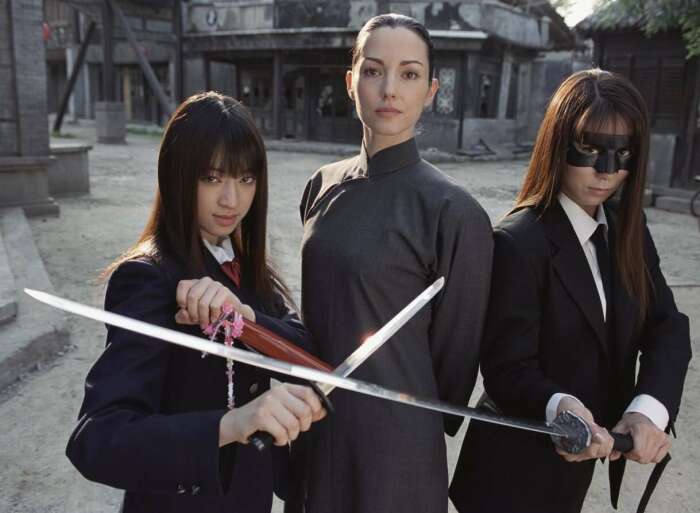 Uma Thurman is The Bride – her character is never named (it’s given a couple of times, but beeped out) – a member of the Deadly Vipers Assassination squad operating under the eye of Bill (David Carradine, not yet seen). When she tries to quit, her marriage is interrupted by the rest of the team, who kill the groom, the priest and even the guy playing the organ. They think they’ve killed the pregnant bride. They’re wrong.
Uma Thurman is The Bride – her character is never named (it’s given a couple of times, but beeped out) – a member of the Deadly Vipers Assassination squad operating under the eye of Bill (David Carradine, not yet seen). When she tries to quit, her marriage is interrupted by the rest of the team, who kill the groom, the priest and even the guy playing the organ. They think they’ve killed the pregnant bride. They’re wrong.
Four years later, she wakes up in a hospital bed, with her child not to be seen. And, boy, is The Bride pissed. She vows to kill her four former colleagues, plus Bill. Volume One covers her awakening, plus the first two-fifths of her mission: Vernita Green (Vivica A. Fox), now a housewife and mother, plus O-Ren Ishii (Lucy Liu), now head of the Tokyo underworld.
She actually goes after O-Ren first; in typically maddening Tarantino style, he screws around with the timeline, and makes that the dramatic climax. Having seen her face Green, we know she survives O-Ren and returns to the States – so much for tension in the climactic battle. Okay, we know there’s another whole movie, and this is probably a moot point. But why bother? Why not just make Green her first target? That, and his tendency to go for a snigger at the most inopportune moments, is why I couldn’t let go completely, and love this as I wanted to.
Plotwise, there are certainly questions (spoiler alert!), though a second viewing might answer these:
- How does Vernita Green, supposedly a top-rate assassin, manage to miss shooting The Bride from five feet?
- After years in bed, The Bride’s legs are understandably weak: yet her arms are strong enough to drag her about?
- What are the police up to for thirteen hours, while The Bride wiggles her toes in the parking lot of the hospital, after killing two people and leaving the corpses in her room?
The Ladies of Kill Bill, Volume One
[Click pics to enlarge]
Uma Thurman
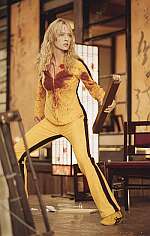 |
Lucy Liu
 |
Chiaki Kuriyama
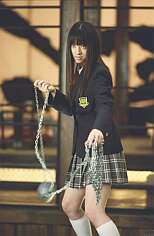 |
Daryl Hannah
 |
However, there’s a beautiful, horrible animated sequence early on, depicting the early life of O-Ren, which proved so completely seductive, I gave up contemplating such trivial things as whether the plot made sense. I suddenly “got” the comic-book style the film was trying to achieve, and things like, oh, The Bride’s ability to bring a Samurai sword onto an airliner no longer bothered me. From then on, the movie became a delicious thrill-ride, albeit one of highly questionable morality – in many ways, that flashback also made O-Ren a more sympathetic figure than The Bride, who has (so far) no motivation for her career choice whatsoever. Liu also gets the best speech, after one of her underlings chooses to mention her mixed heritage. Fabulous stuff.
In contrast, The Bride is largely a machine for extracting revenge, particularly once she hits Japan, picks up a weapon from a master sword-maker (70’s icon Sonny Chiba, as namechecked in True Romance), then heads to O-Ren’s headquarters, where all hell breaks loose. Dressed in a Game of Death yellow jumpsuit, she takes out her enemy’s minions in ones, two, then tens and twenties, with so much arterial spray I suspect the switches to black-and-white and silhouette were as much to avoid censorship as a stylistic choice.
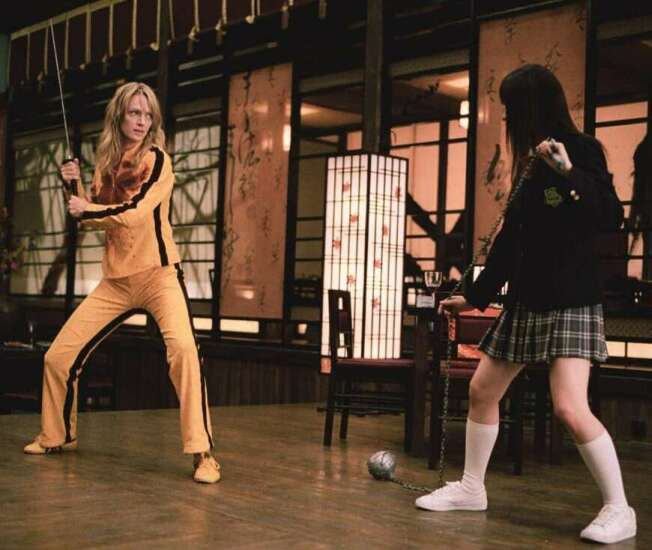 The trailers make this look as if it’s non-stop action, but it isn’t really – there are only a couple of proper set-pieces. The first (cinematically, if not chronologically for the characters) is between The Bride and Green, a brawl around the latter’s house. Despite imaginative use of kitchen utensils, the photography is all wrong, with way too many closeups, leaving it impossible to tell whether there’s any skill – or, indeed, what the hell is going on. I wouldn’t be surprised if this was one of the first things Tarantino shot, since it’s the kind of mistake you’d expect from someone like him, unfamiliar with shooting martial arts.
The trailers make this look as if it’s non-stop action, but it isn’t really – there are only a couple of proper set-pieces. The first (cinematically, if not chronologically for the characters) is between The Bride and Green, a brawl around the latter’s house. Despite imaginative use of kitchen utensils, the photography is all wrong, with way too many closeups, leaving it impossible to tell whether there’s any skill – or, indeed, what the hell is going on. I wouldn’t be surprised if this was one of the first things Tarantino shot, since it’s the kind of mistake you’d expect from someone like him, unfamiliar with shooting martial arts.
However, this is more than made up for with the lengthy sequence in Tokyo. In particular, the battle between The Bride and GoGo Yubari (Chiaki Kuriyama), the Japanese schoolgirl who is mistress of a weapon that can kill you in a dozen different ways. It’s a pity that the excruciating Japanese band, The 5678’s, who are playing in the venue, don’t get taken out as collateral damage. [Ten seconds of them is at least nine too many – they make Shonen Knife sound like the Vienna Philharmonic Orchestra] Regardless, much credit is due to Thurman, Kuriyama and fight co-ordinator Yuen Wo Ping for creating a fight which is simultaneously hard-hitting and original, as well as being aesthetically beautiful.
It’s difficult to give a comprehensive review to a film without an ending – indeed, we’re only half way through the story so far. But what we’ve seen so far beats up 2003’s other Hollywood action heroines, the lame Tomb Raider and Charlie’s Angels sequels, without even breaking a sweat. Roll on Volume 2 early next year, and I’ve a sneaking suspicion we’ll be heading back to see this one a few more times between now and then.
[Thanks to The Reel Truth for tickets to the advance screening of this movie.]
Dir: Quentin Tarantino
Stars: Uma Thurman, Lucy Liu, Sonny Chiba, Vivica A. Fox

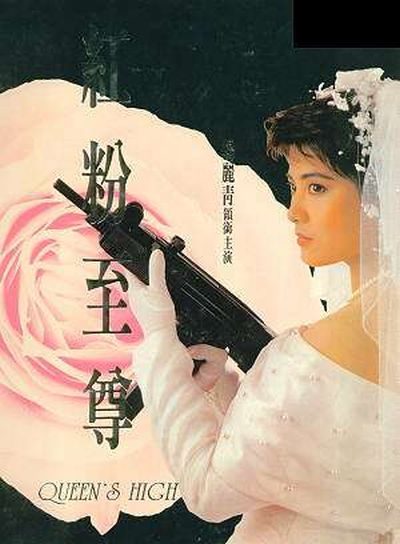 It’s surprising no-one has mentioned the similarity this 1991 pic has to Kill Bill, especially given QT’s liking, both for lifting plots and Hong Kong movies. Here, Cynthia Khan plays Kwanny, the daughter in a gangster family whose wedding day is interrupted by the treacherous slaughter of her intended (and a good few others). Thus explodes a spiral of revenge and betrayal, in which she gets plenty of chance to use her martial arts and gun skills. Of course, there are differences – she is unaware of her enemy within – but the overlap is striking. No doubt Tarantino will claim not to have heard of it – any more than he’d seen City on Fire, before making Reservoir Dogs…
It’s surprising no-one has mentioned the similarity this 1991 pic has to Kill Bill, especially given QT’s liking, both for lifting plots and Hong Kong movies. Here, Cynthia Khan plays Kwanny, the daughter in a gangster family whose wedding day is interrupted by the treacherous slaughter of her intended (and a good few others). Thus explodes a spiral of revenge and betrayal, in which she gets plenty of chance to use her martial arts and gun skills. Of course, there are differences – she is unaware of her enemy within – but the overlap is striking. No doubt Tarantino will claim not to have heard of it – any more than he’d seen City on Fire, before making Reservoir Dogs…




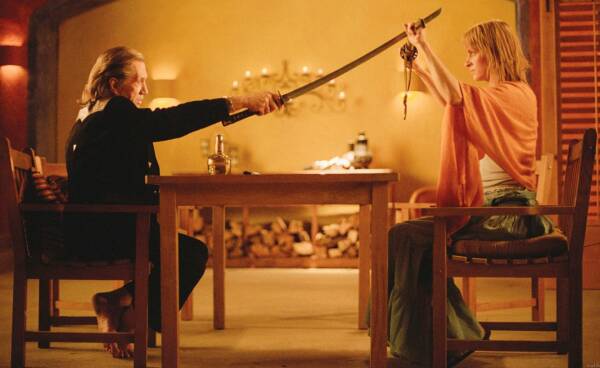 ★★★★
★★★★ Precisely what, I’ll get to in a minute. But I also have to say that when this film works, it does so extremely well, with moments – and a good number of more lengthy sequences – that are just about perfect. We learn why Elle Driver (Hannah) has only one eye; the relationship between Budd (Madsen) and Bill (Carradine); the reason the Bride quit her life as an international jet-setting killer; and how the Crazy 88’s didn’t actually have 88 members. All these elements are dealt with swiftly and efficiently, plugged in like jigsaw pieces in their correct place, so it’s not as if Tarantino
Precisely what, I’ll get to in a minute. But I also have to say that when this film works, it does so extremely well, with moments – and a good number of more lengthy sequences – that are just about perfect. We learn why Elle Driver (Hannah) has only one eye; the relationship between Budd (Madsen) and Bill (Carradine); the reason the Bride quit her life as an international jet-setting killer; and how the Crazy 88’s didn’t actually have 88 members. All these elements are dealt with swiftly and efficiently, plugged in like jigsaw pieces in their correct place, so it’s not as if Tarantino  But when Tarantino just nods to other movies, rather than waving them in the air and shouting “Look at me! Amn’t I
But when Tarantino just nods to other movies, rather than waving them in the air and shouting “Look at me! Amn’t I 












 There is also the nasty question of how much of what is praiseworthy, is actually Quentin’s own work. If you’ve seen the infamous Who Do You Think You’re Fooling?, which intercuts clips from Reservoir Dogs with very similar scenes from a Hong Kong movie made several years previously, City on Fire, you’ll know what I mean. I’d rather praise film-makers such as David Cronenberg, who do more than cobble together pieces “borrowed” from other people, no matter how amusingly post-modern the results may be.
There is also the nasty question of how much of what is praiseworthy, is actually Quentin’s own work. If you’ve seen the infamous Who Do You Think You’re Fooling?, which intercuts clips from Reservoir Dogs with very similar scenes from a Hong Kong movie made several years previously, City on Fire, you’ll know what I mean. I’d rather praise film-makers such as David Cronenberg, who do more than cobble together pieces “borrowed” from other people, no matter how amusingly post-modern the results may be. Uma Thurman is The Bride – her character is never named (it’s given a couple of times, but beeped out) – a member of the Deadly Vipers Assassination squad operating under the eye of Bill (David Carradine, not yet seen). When she tries to quit, her marriage is interrupted by the rest of the team, who kill the groom, the priest and even the guy playing the organ. They think they’ve killed the pregnant bride. They’re wrong.
Uma Thurman is The Bride – her character is never named (it’s given a couple of times, but beeped out) – a member of the Deadly Vipers Assassination squad operating under the eye of Bill (David Carradine, not yet seen). When she tries to quit, her marriage is interrupted by the rest of the team, who kill the groom, the priest and even the guy playing the organ. They think they’ve killed the pregnant bride. They’re wrong.



 The trailers make this look as if it’s non-stop action, but it isn’t really – there are only a couple of proper set-pieces. The first (cinematically, if not chronologically for the characters) is between The Bride and Green, a brawl around the latter’s house. Despite imaginative use of kitchen utensils, the photography is all wrong, with way too many closeups, leaving it impossible to tell whether there’s any skill – or, indeed, what the hell is going on. I wouldn’t be surprised if this was one of the first things Tarantino shot, since it’s the kind of mistake you’d expect from someone like him, unfamiliar with shooting martial arts.
The trailers make this look as if it’s non-stop action, but it isn’t really – there are only a couple of proper set-pieces. The first (cinematically, if not chronologically for the characters) is between The Bride and Green, a brawl around the latter’s house. Despite imaginative use of kitchen utensils, the photography is all wrong, with way too many closeups, leaving it impossible to tell whether there’s any skill – or, indeed, what the hell is going on. I wouldn’t be surprised if this was one of the first things Tarantino shot, since it’s the kind of mistake you’d expect from someone like him, unfamiliar with shooting martial arts.





















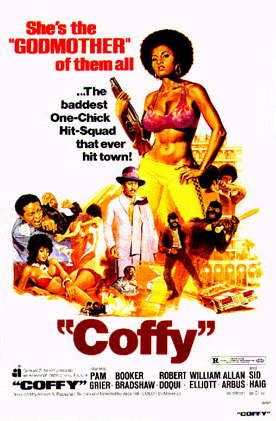 Neither star Grier nor director Hill were exactly strangers to the world of exploitation when they made this, but their combination here created a whole new subgenre, crossing action heroineism with black cinema. Following her would come Foxy Brown, Cleopatra Jones and the rest, but let it be said, Coffy was the first of any significance.
Neither star Grier nor director Hill were exactly strangers to the world of exploitation when they made this, but their combination here created a whole new subgenre, crossing action heroineism with black cinema. Following her would come Foxy Brown, Cleopatra Jones and the rest, but let it be said, Coffy was the first of any significance.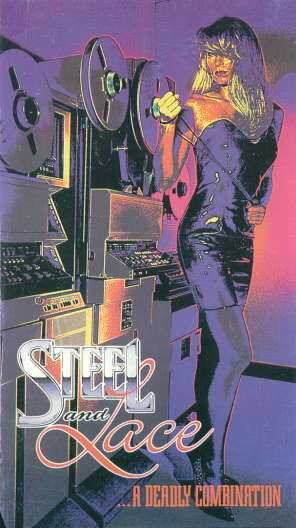 Inside ten minutes, we’ve had heroine Gaily Morton (Wren) raped and her attackers acquitted in court, not to mention her subsequent leap off a roof-top to her death – this isn’t a film which hangs around, boys and girls. Luckily, her brother is a NASA boffin (Davison – you might recognise him as the Senator from X-Men), who builds a robot in her image, in order to wreak gory revenge on the perpetrators five years later. Cleaning up behind are a cop (Naughton) and his ex-girlfriend, a courtroom artist (Haiduk) who joins the dots.
Inside ten minutes, we’ve had heroine Gaily Morton (Wren) raped and her attackers acquitted in court, not to mention her subsequent leap off a roof-top to her death – this isn’t a film which hangs around, boys and girls. Luckily, her brother is a NASA boffin (Davison – you might recognise him as the Senator from X-Men), who builds a robot in her image, in order to wreak gory revenge on the perpetrators five years later. Cleaning up behind are a cop (Naughton) and his ex-girlfriend, a courtroom artist (Haiduk) who joins the dots.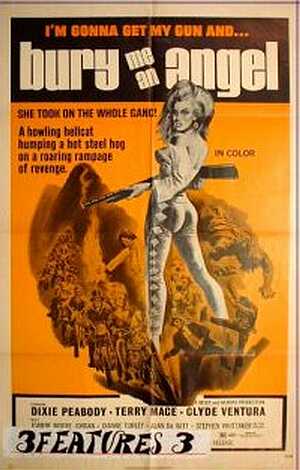 Though with a tagline of “A howling hellcat humping a hot steel hog on a roaring rampage of revenge”, how
Though with a tagline of “A howling hellcat humping a hot steel hog on a roaring rampage of revenge”, how 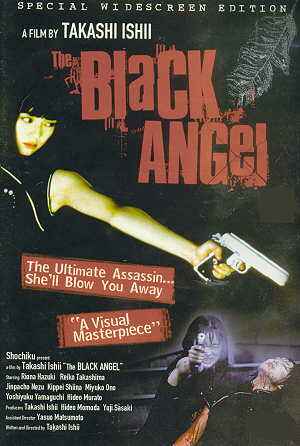 The first half of this is quite excellent. A young girl, Ikko, daughter of a Yakuza boss, sees her parents murdered on the orders of her step-sister but is rescued by the Black Angel (Takashima), a female assassin, and escapes to America. 14 years later, she returns (Hazuki), calling herself the Black Angel and starts wreaking revenge on those responsible – who retaliate by calling in the
The first half of this is quite excellent. A young girl, Ikko, daughter of a Yakuza boss, sees her parents murdered on the orders of her step-sister but is rescued by the Black Angel (Takashima), a female assassin, and escapes to America. 14 years later, she returns (Hazuki), calling herself the Black Angel and starts wreaking revenge on those responsible – who retaliate by calling in the 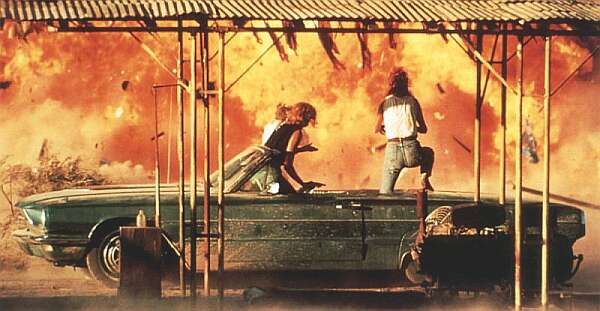 ★★★★
★★★★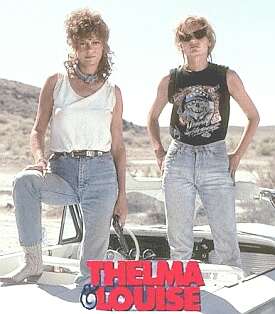 But to quote one character in the movie, “Bitches from
But to quote one character in the movie, “Bitches from 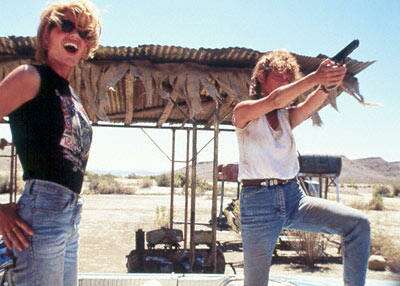 It becomes like having Andrea Dworkin yelling in your face for two hours, yet the film’s moral is that if women empower themselves, death inevitably results. Khouri seems to be saying, “You can only beat the system by suicide,” while the patriarchy watches from behind its sunglasses and firearms. We
It becomes like having Andrea Dworkin yelling in your face for two hours, yet the film’s moral is that if women empower themselves, death inevitably results. Khouri seems to be saying, “You can only beat the system by suicide,” while the patriarchy watches from behind its sunglasses and firearms. We 